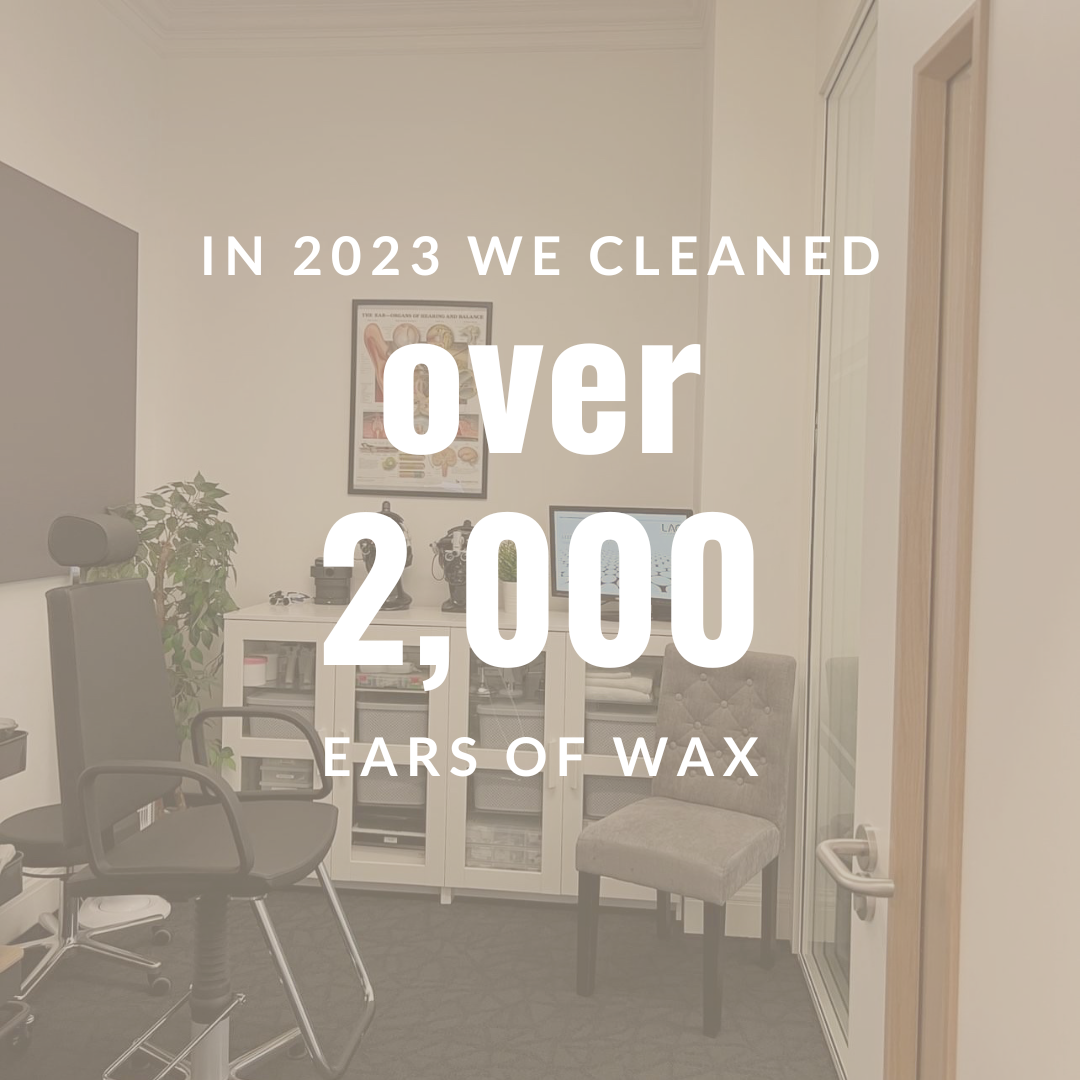Ear Wax Removal, What’s It All About?
2023 was a big year for ear wax removal. Did you know that we unblocked 2,126 (give or take) ears of wax? Which is pretty good going for our two audiologists!
But what is ear wax removal and who needs it? Well, we’re here to give you a little more information on the procedure.
What is Ear Wax?
Ear wax is simply a natural mix of oil, fats, sweat and dead skin found in the ear canal. It isn’t really a bad thing because it helps to protect your eardrum and ear canal ear against dust, dirt and bacteria. The secretions lubricate the ear canal and prevent the skin from becoming too dry. What’s really interesting though is that contents of ear wax changes from person to person based on diet, age and race.
What Can Cause a Build Up of Ear Wax?
Unfortunately, some people just suffer from regularly blocked ears. This can simply be an over production of ear wax, narrow ear canals or dry skin. The causes of earwax build up can be
- Overproduction of ear wax
- Narrow ear canals
- Hairy ear canals
- Dry earwax, (not much moisture in the secretion as you get older)
- Bony growths in the ear canal can block the progress of ear wax
- An awkward ear canal bend
- Using cotton buds in the ear
- Wearing hearing aids (pushing the wax back in)
- Wearing in-ear headphones (same as above)
Do I Need Ear Wax Removal?
The commonest symptom of excess ear wax is dull hearing but other symptoms can include:
- Earache (as the wax builds up and hardens, it can press against the ear canal causing pain)
- Itchiness in the ear canal
- Dizziness (ear wax blockage can occasionally cause dizziness and a feeling of unbalance)
- Tinnitus (excess ear wax can give a sense of buzzing or ringing in the affected ear)
What Should I Do?
Generally, you should not have to do anything about ear wax, unless it is causing a problem. The ear is self-cleaning and, if functioning correctly, the wax should just drop out of its own accord. However, occasionally wax can become lodged on the canal wall and subsequently cause a blockage. Normally once this build up starts, it will just continue unless it is washed or sucked out. Eventually, the ear wax plug will grow to fill the ear canal and it is only then that you will really be aware of it.
Usually, the first indication you have a problem is when water gets into the ear during swimming or showering. Water causes the ear wax to swell and it blocks the ear canal or becomes trapped behind it making everything sound ‘underwater’. If the wax build up has got to the stage where it is causing deafness, tinnitus or is uncomfortable, it needs to be removed.
How Do I Book an Appointment?
To book an appointment, you can visit our website here. We can arrange an appointment by email, telephone or on our social media pages!
What Should I Expect at My Appointment?
An appointment in total takes around twenty to thirty minutes. On arrival, you will be greeted by one of our reception staff and asked to fill in a brief ear medical history and consent form.
An audiologist will take you through to one of our treatment rooms and begin the consultation. Using video-otoscopy your ears will be assessed first which you can watch on screen if you’re not too squeamish! The audiologist will explain the process throughout and advise whether wax removal is needed for one ear or both ears. Methods of wax removal that we offer are microsuction and water irrigation, the method used will depend on the amount and type of wax that you have. What’s the difference?
Microsuction
Microsuction is generally regarded as the safest form of clearing ear canals of debris and wax, minimising the risk of infection and damage to the eardrum. In fact, many ENT Consultants and Aural Care Nurses prefer this form of wax removal over traditional irrigation. It is a relatively quick and mess-free process with both ears typically taking about 10-15 minutes to clear. Microsuction is even safe to perform on ears where traditional irrigation is not allowed, such as where the eardrum is perforated, where there is a mastoid cavity or ear infection.
Irrigation
There are some occasions where microsuction is not suitable, for example where wax is adhering to the ear drum or is exceptionally soft. In such cases we can use a gentle water irrigation. Our audiologists have been NHS trained in pulse irrigation for such times where this is the most appropriate method of wax removal.
Once the wax removal is complete, the audiologist will use video-otoscopy to complete a final assessment and discuss aftercare advice with you if necessary.
If the wax is hard and impacted and cannot be removed in one thirty-minute appointment, you will be invited back for a free follow up to fully clear the ear.

Don’t forget to follow us on social media!
X
Instagram
Facebook






